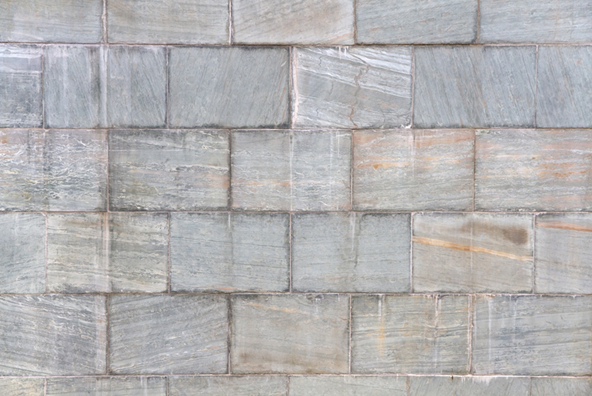
7 Things to Know Before Installing Natural Slate Tile
Are you unsure if natural slate tile will hold up in your home? It’s common to hesitate before making a permanent choice. You might wonder about the right prep, slip issues, or even if the style will still look good years later. Then there’s the cost and the headache of installation.
All fair worries. Slate tiles are beautiful, but they need a bit of knowledge before you lay them down. This guide clears up those doubts, step by step. You’ll walk away with direction, not just decoration.
Understanding the Basics of Natural Slate Tile
Slate is a fine-grained natural stone, made over time from clay and volcanic ash. That layered formation gives it strength. But not all slate performs the same. You have to check porosity, color consistency, and flaking.
When you choose natural slate tile, you want pieces cut thick and flat. That avoids uneven surfaces later. Some pieces look polished but might chip fast if they were trimmed thin. Consider the origin, too.
Some regions produce slate better suited for floors, others better for walls. That choice matters more than it seems. Look closely at the texture and edge finishing. That tells you if it’ll hold up in daily use.
Surface Prep and Foundation Checks Before Installation
Before touching tile, check the subfloor. Natural slate tile weighs more than ceramic or vinyl. Weak floors buckle. You must use a cement backer board, especially in kitchens or bathrooms. Leveling is also key. Even a half-inch dip can create a slope or wobble underfoot.
Also, never install directly over plywood. It absorbs moisture and warps. Use thinset mortar with proper additives. And check if the surface holds primer before setting tile. If not, nothing bonds well. Fix that early, not later.
Moisture Resistance and Sealing Plans
Natural slate tile absorbs water. Some more than others. That’s why sealing matters. Not once, but twice. Once after installation and again every few years. Skip this, and stains ruin the look. Grout can crack too.
Sealants differ. Some darken the tile’s tone, others keep it natural. Test a sample before applying it across the room. Use penetrating sealers, not just surface ones. The goal is not to coat the top like wax but to shield deep inside. Proper sealing helps in wet areas like entryways, laundry, or basements.
Picking the Right Type of Slate for Each Area
Not all slate belongs everywhere. Soft types flake fast in high-traffic zones. Some slate tiles suit fireplaces or walls better. In fact, more than four‑fifths of the slate used in entryways comes from high‑density sources (according to data from the Natural Stone Institute). That’s not random; they last longer and resist scratches.
When shopping, ask if your slate was tested for strength. Natural Slate Tile Flooring is ideal for kitchen floors due to its dense, honed surface, while its natural slip resistance makes it perfect for bathrooms. For walls, aesthetics come first and that’s why you see split-face slate there often.
Comparing Finishes, Textures, and Patterns
| Type of Finish | Best Use Cases | Texture | Notes |
| Honed | Kitchen, Bath, Floors | Smooth, Low Sheen | Easy to clean, durable |
| Split Face | Feature Walls | Rough, Uneven | For looks, not foot traffic |
| Tumbled | Entryways, Patios | Softened Edges | Rustic appeal, slip-friendly |
| Polished | Indoor Walls | Glossy, Slick | Not for wet zones |
Make your finish match your space. It’s a mistake to buy just based on looks. Each surface reacts differently to wear. High gloss gets slippery. Split face traps dust. Honed offers balance. Texture should be functional first.
Budget Expectations and Other Project Costs
Many people ask how much a DUI lawyer costs, and that same curiosity applies here. Budgets are real. Installing natural slate tile doesn’t stop at buying the tile. Add sealers, backer boards, grout, and labor. Sometimes cuts add cost, too.
Complex patterns take more time and money. Straight-lay is cheaper, diagonal or mosaic add up. Expect waste, too. Order extra tile. At least 10% more chip edges. Corners break, and matching old colors later is hard; better safe than stuck.
Grout Type and Color Matching Basics
Use non-sanded grout for thin lines and sanded for wider joints. Some slate needs color-matched grout. Others stand out with contrast. Always test grout color before full use. Moisture can darken grout. Seal that too.
And never rush this part. Grout haze ruins the clean look of natural slate tile. Use spacers while laying tiles. Then remove before it hardens. Clean lines matter. And soft pads help avoid scratching while scrubbing off grout excess.
Maintenance Tips That Actually Work
Slate lasts decades when cleaned right. But skip care, and the tile looks dull in months. Sweep regularly. Avoid acidic cleaners. They eat the surface and use stone-specific soap.
And reseal often. Foot traffic and sun fade protection. Use mats at doors. In bathrooms, wipe after use. Water marks build up. A few minutes each week keeps the whole space fresh.
Simple Maintenance Steps to Keep Your Natural Slate Tile Looking Fresh
- Use a soft-bristle broom to sweep the tiles weekly. Dirt can dull the surface if left too long.
- Always wipe spills right away. Slate can absorb liquids and may stain if ignored.
- Stick to pH-neutral cleaners. Harsh chemicals damage the stone’s surface over time.
- Apply a quality sealer once every few years. This protects against moisture and daily wear.
- Avoid dragging furniture across the tiles. Use padding under the legs to reduce scratches.
- Inspect corners and edges often. Cracks start small but grow fast without care.
- Damp mop with clean water when needed. Let air-dry completely to avoid residue.
- Never steam clean the surface. The heat can weaken the structure of natural slate tile.
- If tiles feel loose, contact an installer quickly. Ignoring it will only cost more later.
- Keep entry mats near doors. These reduce outside grit from reaching the tile inside.
Final Thoughts
For homeowners or builders planning something timeless, natural slate tile stands out as one of the smartest picks. We at Real Goods deliver slate that brings beauty and trust to your space. Visit our website and pick a slate that matches your dream project today.
FAQs
- How often should I seal natural slate tile?
Once after installation and then every 2-3 years, depending on usage and foot traffic.
- Can I install natural slate tile myself?
Yes, but only if your surface is level and you understand proper mortar techniques.
- Will the tile color fade in sunlight?
If left unsealed, yes. UV rays lighten some tones, especially in lighter shades.

